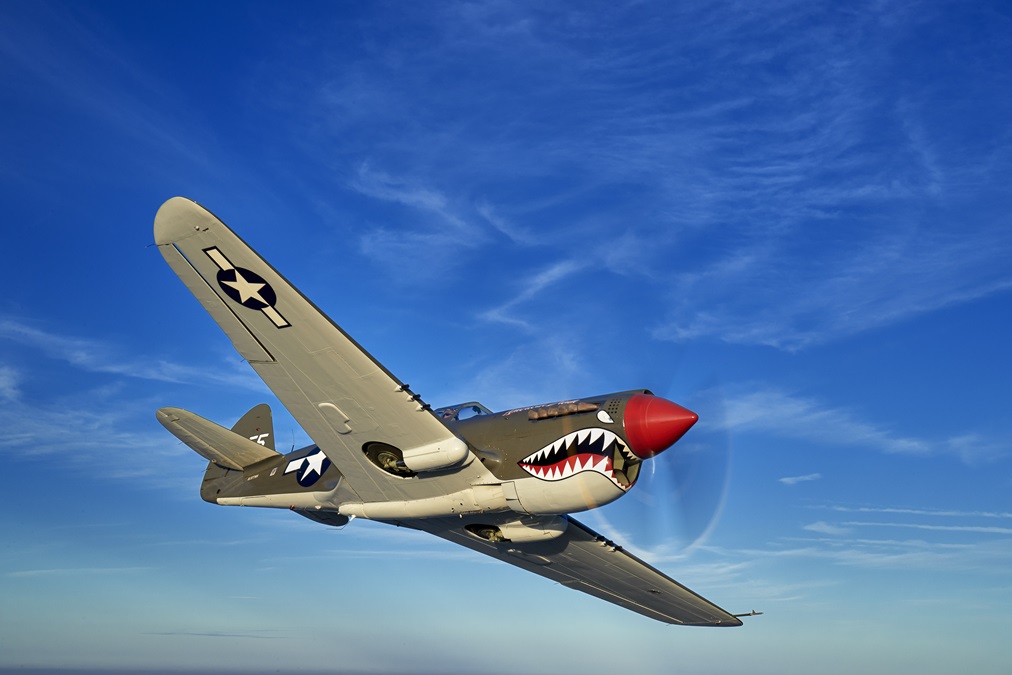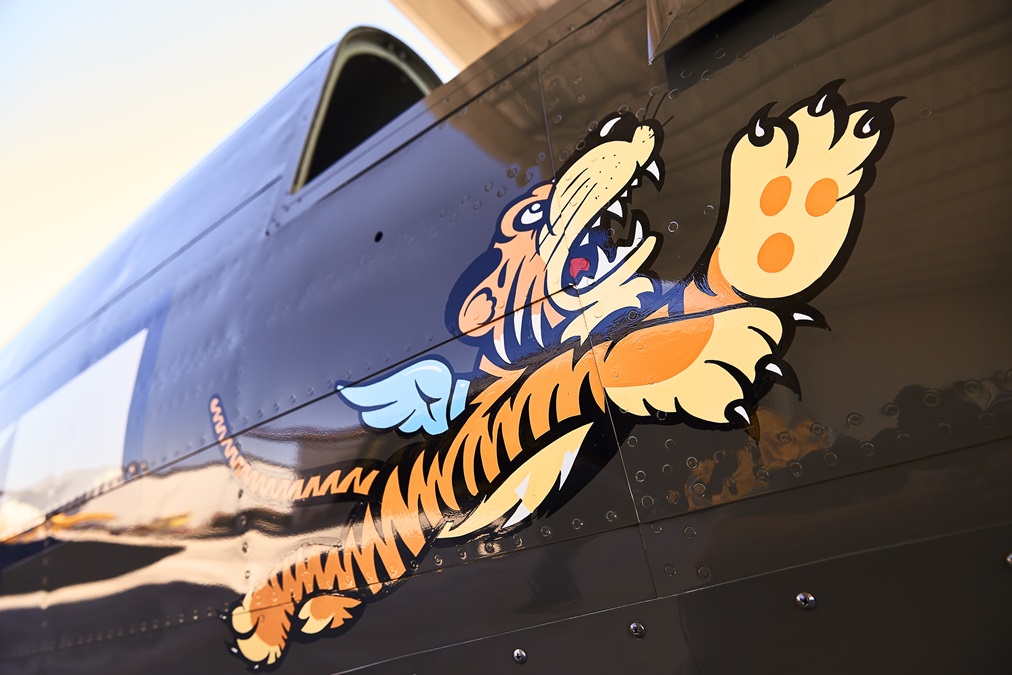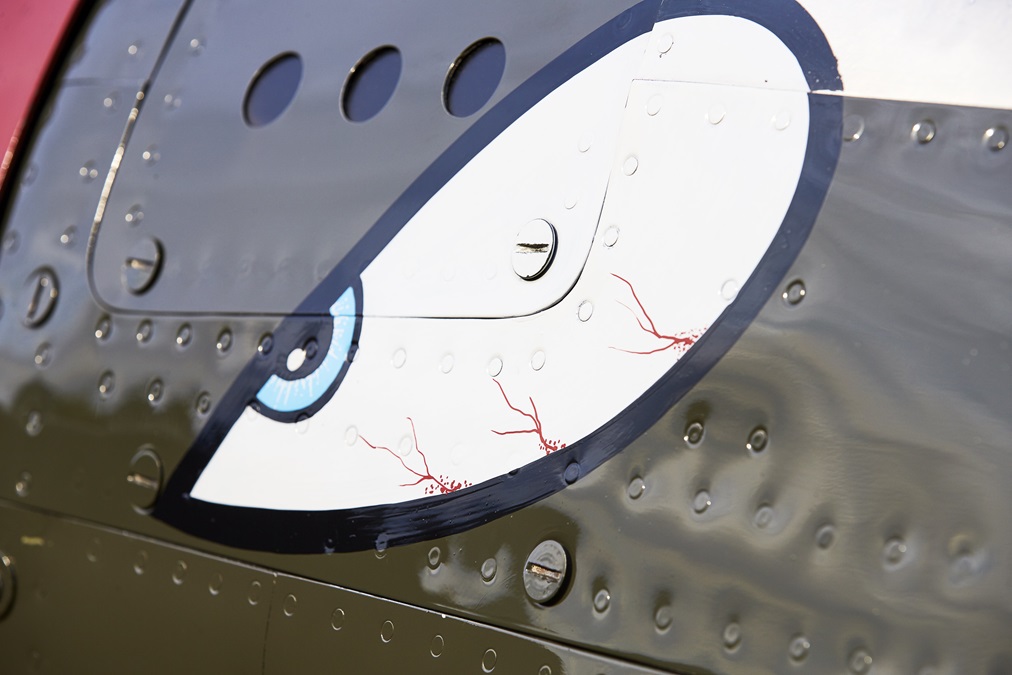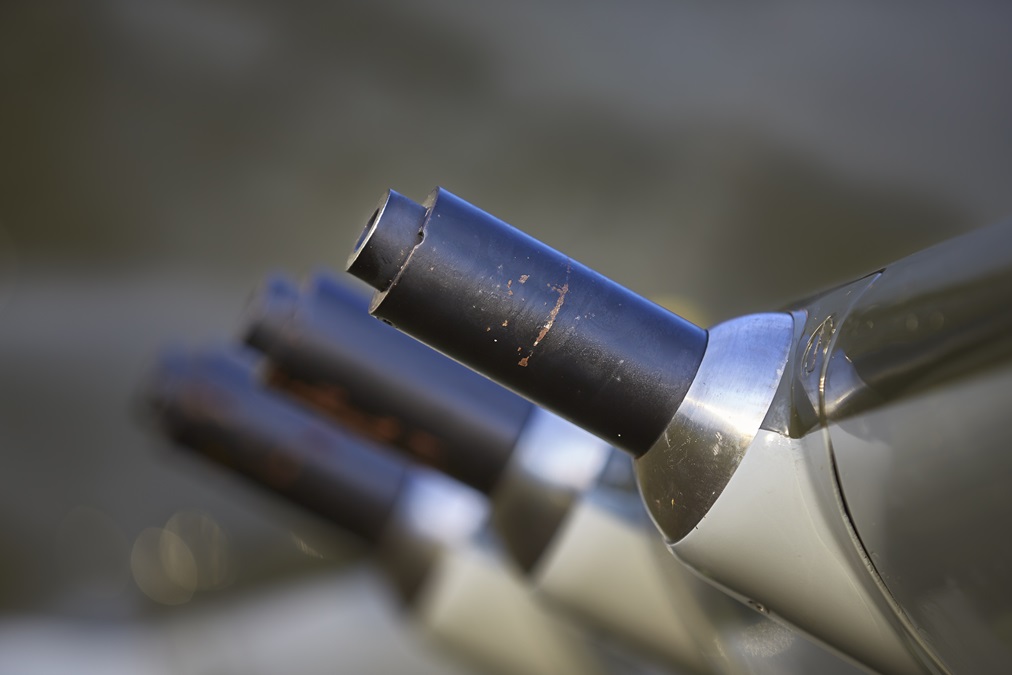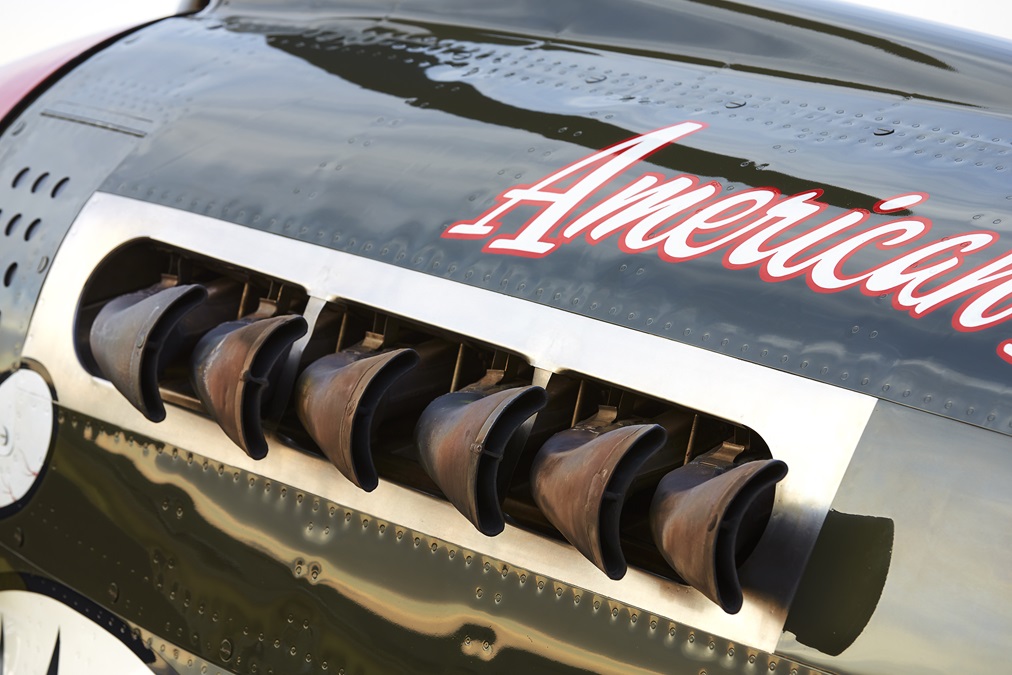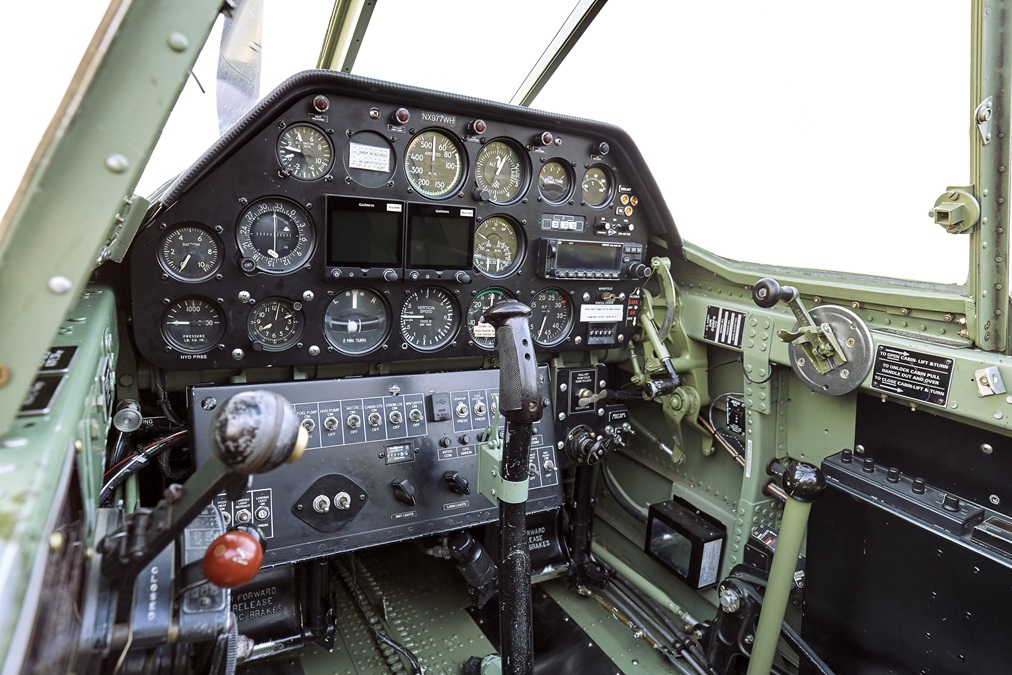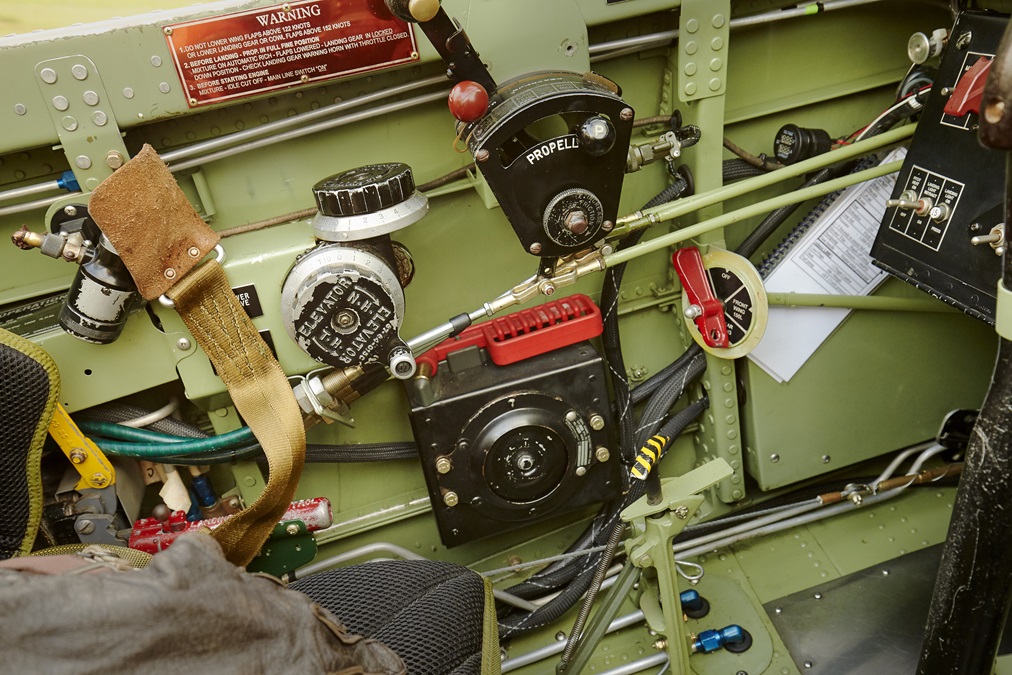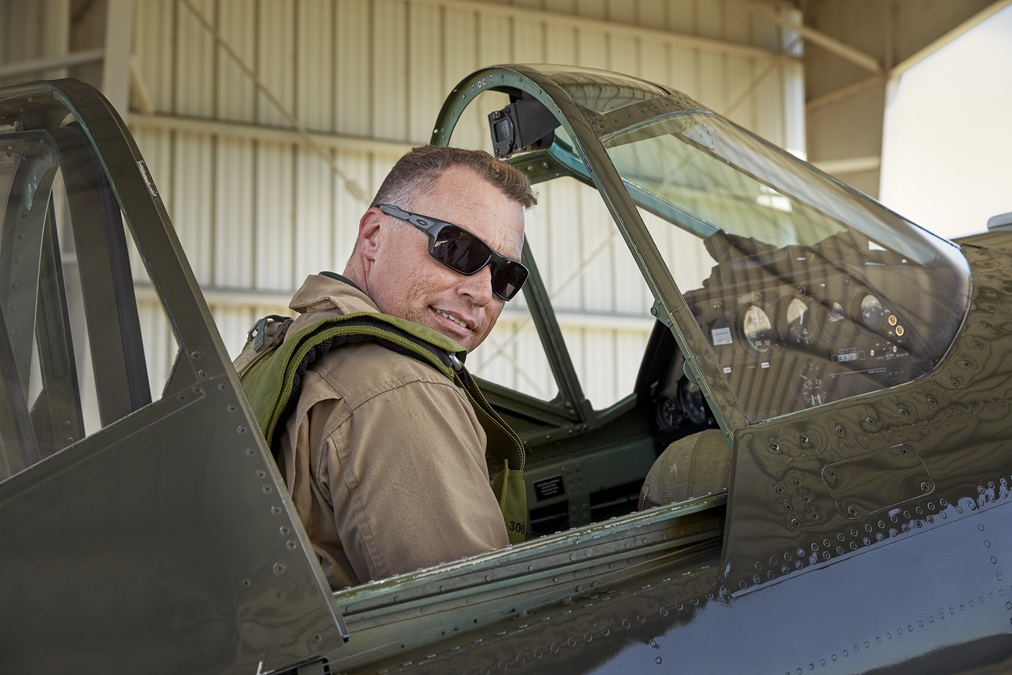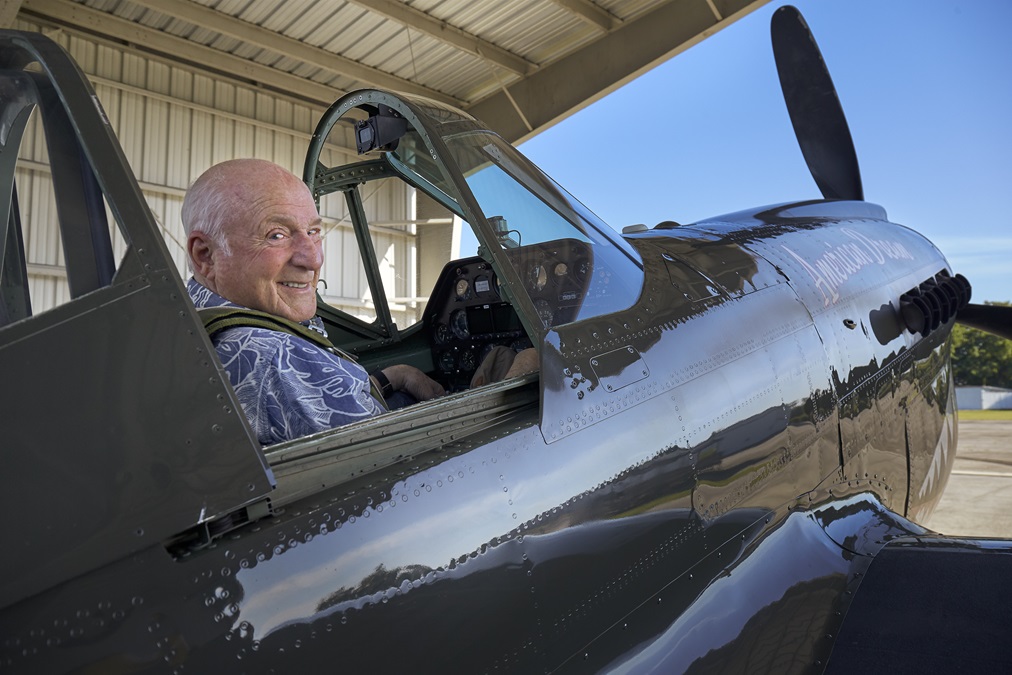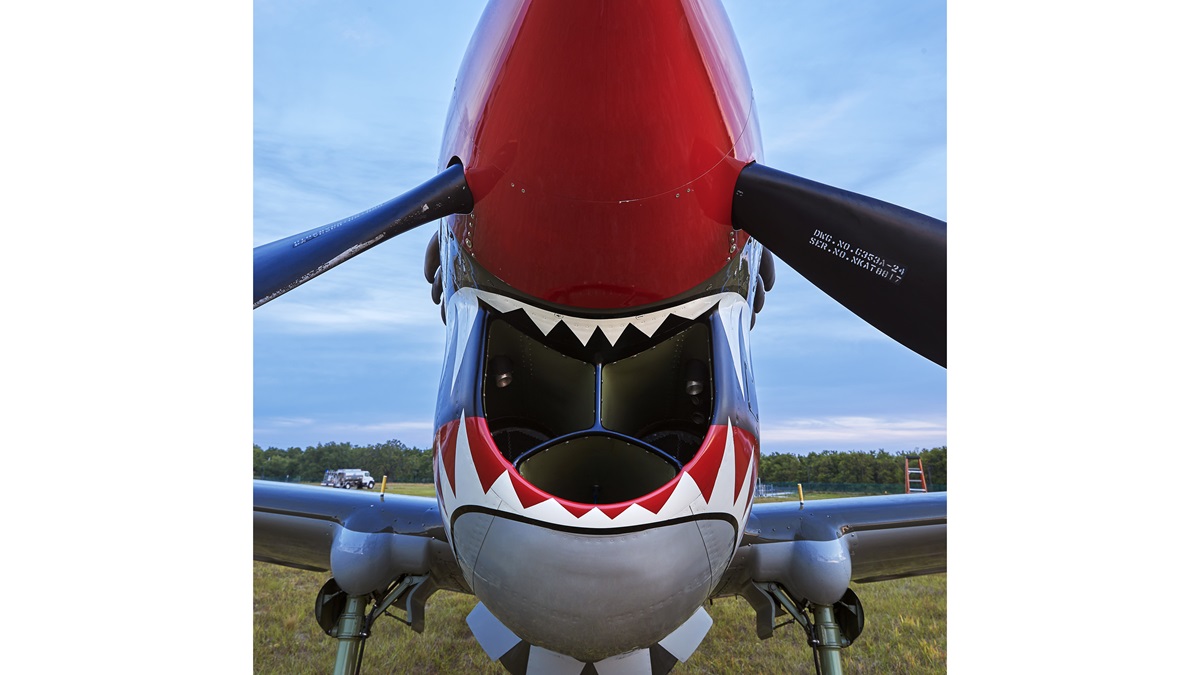Flying the 'American Dream'
Your chance to fly a World War II front-line fighter
Although this iconic nose art is synonymous with the Flying Tigers, they weren’t the first to use it. The Royal Air Force 112 Squadron in North Africa was the first of the Allies to adopt the visage of a ferocious-looking shark on its fighters, preceding the Tigers’ use of it by six months. And the RAF apparently copied it from Messerschmitt Bf 110s flown by the Luftwaffe in Crete. The Flying Tigers, however, most famously used and popularized the snarling shark (see “Proficient Pilot: Flying Tigers,” p. 20). They had hoped that it would frighten the supposedly superstitious Japanese.
The Curtiss P–40 first flew on October 14, 1938, at the Curtiss-Wright factory in Buffalo, New York, which is where all P–40s were built, 13,738 of them. Those destined for the U.S. Army Air Corps and Army Air Forces were called Warhawks and included 26 TP–40 trainers fitted with two cockpits and dual controls. Those P–40s built for our Allies—including the Soviet Union—were designated as Tomahawks and Kittyhawks. Production ended in November 1944 when the P–40 was replaced by more modern fighter designs. The P–40 was the third most-produced U.S. fighter of the war, behind the P–51 Mustang and the P–47 Thunderbolt.
Early in the war, the P-40 was our principal front-line fighter.The Curtiss was designed as a ground attack fighter to defend U.S. shores against amphibious assault and to support ground operations. It lacked the high-altitude performance needed to be an interceptor or bomber escort, but up to 15,000 feet msl it was a superior fighter.
Early in the war, the P–40 was our principal front-line fighter. At dawn on December 7, 1941, there were 99 based in Hawaii, but only 27 survived the day, and only a few of those managed to get airborne during the sneak attack.
The rugged fighter operated in all theaters of the war and served in combat roles from before Pearl Harbor until V-J Day (Victory over Japan Day).
The Warhawk is powered by a liquid-cooled Allison V-12 engine that develops 1,325 horsepower (1,530 hp in an emergency). The P–51 has a similar V-12 engine, the Packard-built Rolls-Royce Merlin, which results in frequent comparisons between the two aircraft. The primary difference in the engines is that the Allison has a single-stage supercharger, while the Merlin has a two-speed, two-stage supercharger—explaining the Mustang’s superior high-altitude performance. Both engines, the Allison and the Merlin, have small frontal areas and create much less drag than air-cooled radial engines. The heavy-duty Allison, however, has fewer moving parts than the Merlin and is considered more reliable, almost bulletproof. It is noteworthy that some P–40s had Merlin engines.
Fast forward to 1979. A 7-year-old Swedish boy, Thom Richard, had read a magazine article about warbirds racing at Reno, in particular a P–51 called Red Baron. This inspired him to begin dreaming about becoming a warbird pilot, and nothing would discourage him. Still living in Sweden, Richard got his glider pilot’s license at 16. He immigrated to the United States the following year to pursue a career in aviation. He arrived homeless and low on funds. He occasionally lived in hangars and automobiles because whatever money he earned would be spent on flying, on making his dream come true.
Richard flew a variety of warbirds, but the Curtiss P-40 Warhawk had become his favorite. "This airplane was made for me," he says fondly.Such determination led him to become a taildragger instructor in the San Francisco Bay Area as well as an airframe and powerplant mechanic. He got checked out in a T–6 Texan and began barnstorming all over the country in one. It was not long before he and a friend, Graham Meise, maxed out their credit cards to buy their own T–6. Together they formed Warbird Adventures at the Kissimmee Gateway Airport near Orlando, Florida, for the purpose of offering introductory flights, teaching aerobatics, and providing flight instruction in a warbird. They eventually had a trio of Texans.
Did I mention that Richard also became an accomplished skydiver?
In the midst of all this, Richard became a naturalized citizen in 2008. This seemed to have energized him further because the following year he won gold while racing a Formula One airplane at the Reno National Championship Air Races. In 2015 he won the AirRace 1 World Cup three times, in Barcelona, Reno, and Tunisia. A few years later he began flying a P–40 for a museum and with it performed aerobatic routines at airshows. He also raced jets at Reno as well as Precious Metal, a highly modified P–51. Thom Richard was living the American dream.
Richard flew a variety of warbirds, but the Curtiss P–40 Warhawk had become his favorite. He was fascinated by that airplane and the fame brought to it by the exploits of the Flying Tigers. “This airplane was made for me,” he says fondly. “Its handling qualities are even better than those of a Mustang, and when below 10 [thousand feet] and 250 [mph], it will outperform one.”
Richard desperately wanted a TP–40, the dual-control trainer, with which to share his love of the airplane. Trouble is, there are only six such aircraft remaining in the world. (There are 40 single-place P–40s in the United States, and half of these are projects in various states of restoration.)
Flash back to September 13, 1943. U.S. Army Air Forces 1st Lt. Joel Thorvaldson of the 8th Fighter Squadron had been assigned a P–40 that he named Punkins, a nickname he had given his wife. While north of Lae, New Guinea, he engaged the Japanese, shot down a Zero fighter, and took out a Betty bomber before taking a round to the engine. Thorvaldson crash-landed his shot-up Warhawk in tall grass and survived in enemy territory for five days before being rescued by Australian soldiers. The wreckage, however, languished and eroded at the crash site for decades. It was recovered during the 1990s and taken to Australia for restoration and the addition of a second seat.
The Curtiss made its second maiden flight in 2008; was purchased in 2014 by an American, John Davis; and was shipped to Colorado. Davis fitted the second cockpit with instrumentation and flight controls, flew the two-place airplane for a few years, and finally decided to sell it. Richard’s search for his dream machine came to a joyous end in February 2018. Now emblazoned as nose art across both sides of the cowling is his obvious choice for a name: American Dream.
Also painted on each side of the fuselage is a cartoon of a tiger with wings—the Flying Tigers’ insignia, designed for the group by Walt Disney.
If you have a keen eye for detail, you will notice that Richard’s P–40 has a Hamilton Standard constant-speed propeller—essentially the same as on a DC–3—instead of the original Curtiss electric propeller, which is less reliable and for which there is less support available. The air inlet on the chin of the cowling is divided into three sections. Two of them direct cooling air to the left and right radiators, mounted beneath the engine, which give the cowling of the P–40 its distinctive profile. The third portion of the air inlet supplies the oil cooler.
Richard assisted me into the front cockpit. It is not roomy and does not easily accommodate pilots of girth. Cockpit ergonomics aren’t much to brag about either. Some handles and control levers are difficult to reach and operate (but only if your dimensions inhibit cockpit dexterity).
On the ground, the Warhawk is pitched 12 degrees nose high, 2 degrees more than a Mustang. This plus the induction-air scoop on top of the cowling make it all the more difficult to see over the nose. S-turning while taxiing is an absolute necessity, as is holding the stick back to add “weight” to the tailwheel and maximize steering effectiveness.
The runup is unremarkable except for the thrilling promise of an exciting flight made by the snarl of the Allison engine. Rudder trim should be set 1 to 2 degrees right.
Holding full right aileron at the beginning of the takeoff roll helps to counter torque, and the narrow landing gear demands that you keep your feet busily engaged—the airplane does not have a tailwheel lock. You allow the tail to rise slightly and the P–40 flies itself off at about 120 mph. Climbing at 150 mph rockets you to 15,000 feet in 5 minutes.
Retracting the landing gear requires an unusual ritual. You reach down between your seat and the left sidewall to feel for the gear lever. After finding it, you slide the lever’s safety latch forward and then pull up the lever. You then use the pinky of your right hand to engage and hold a trigger switch on the control stick. This activates the electric hydraulic pump that raises the gear. After the indicators show that the gear is fully retracted (in about 20 seconds), attempt to move the manual hydraulic pump handle on the right sidewall. You know that the wheels are snugly in their wells if the handle won’t budge. Lowering the landing gear requires a similar procedure, as do raising and lowering the flaps. Fortunately, it does not take long to get used to all of this.
Like other single-engine fighters of the war, every change in power or speed requires a corresponding change in trim. Control forces are lighter in a P–40 than in a P–51, especially in pitch. It’s easy to begin a climb or descent without realizing it. The airplane is much more nimble than I had expected.
The Warhawk could not quite turn and maneuver with the lighter Japanese Zero—no other fighter could—so pilots learned to avoid dogfighting with one. At low altitudes, though, the P–40 had the advantage when climbing, diving, rolling, and accelerating, performance you get to see for yourself when flying Thom Richard’s Warhawk. You learn to appreciate why the P–40 was so successful against the Zero using “dive, attack, and run” tactics. The P–40 has a never-exceed speed of 485 mph and is limited to plus 8 and minus 4 Gs.
Stalls are unremarkable and an approach to one is signaled by a tail buffet that is difficult to ignore. The airplane loses about 1,000 feet per turn in a spin, and recovery can be effected simply by letting go of the controls.
You enter the traffic pattern and lower the landing gear at less than 175 mph. Begin to deploy the split flaps when passing abeam the numbers at less than 150 mph. While on base leg at 135, crank open the canopy to facilitate egress, just in case. Continue bleeding airspeed so as to arrive over the runway threshold at 110 mph.
The narrower main landing gear and higher deck angle make a three-point landing more challenging in a P–40 than in a Mustang or a T–6. Nor is the Warhawk as capable of making crosswind landings. The tail is not as heavy as that of a Mustang, which makes it easier to nose over a P–40. It is important to hold the stick all the way back during the landing roll.
I had thought that I would impress Richard with my aeronautical prowess. After all, I’m an experienced pilot who has flown some warbirds—including a Mustang. Well, I impressed him all right, but not the way in which I had intended. Three-pointing the Warhawk is much more demanding than I had anticipated. It was challenging just to keep the airplane anywhere near the centerline. The later and advanced design of the Mustang, by comparison, makes it more genteel and relatively mild mannered.
The Curtiss P–40 is a joy to fly but keeps you on your toes. It will definitely improve your piloting skills. Richard’s enthusiasm for the P–40 is apparent. He says, “I have so much fun teaching pilots to fly the P–40 that I’m envious of myself.” He adds that part of his personal mission is “to be a recruitment center for general aviation, to use the Warhawk and T–6 to get people excited about flying.”
If you want flight instruction—or to get a type rating!—in a classic World War II fighter from a pilot’s pilot who lives to fly and loves to share his American Dream, this is your chance. (It is thankfully less expensive than getting dual instruction in a Mustang.)
Thom Richard has been instructing in warbirds since he was 23 and has accumulated 12,500 hours of flight time, of which half are in warbirds and a fourth are in helicopters.
Further information can be obtained at WarbirdAdventures.com or by calling 407-870-7366.

